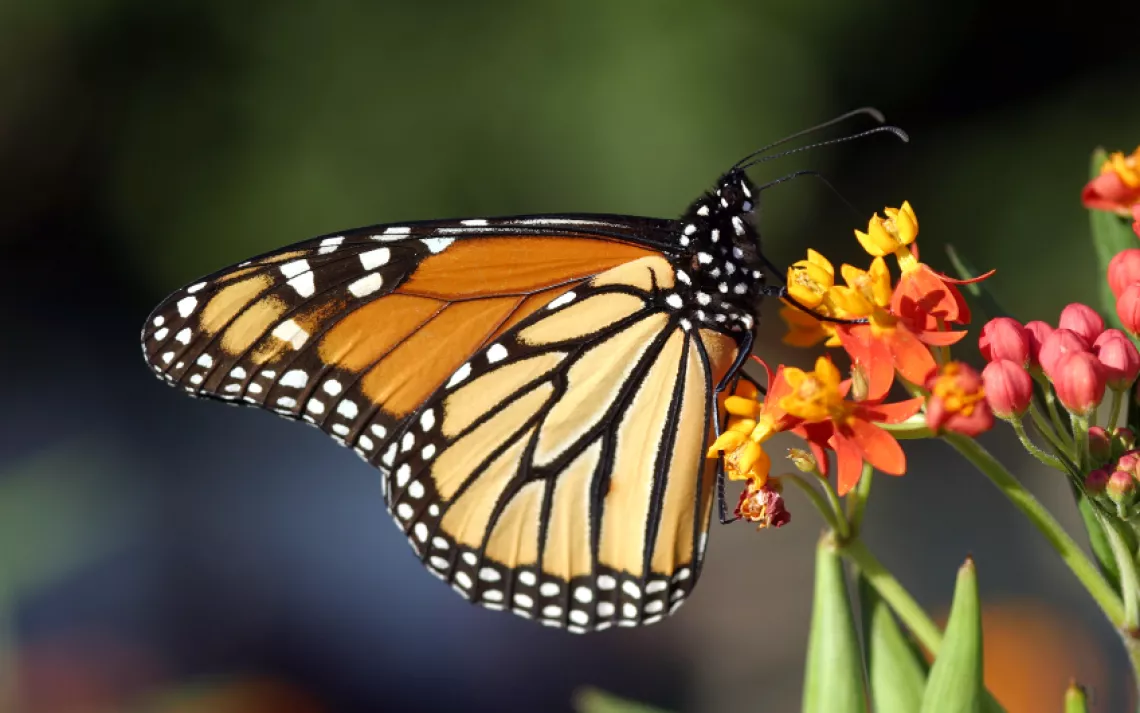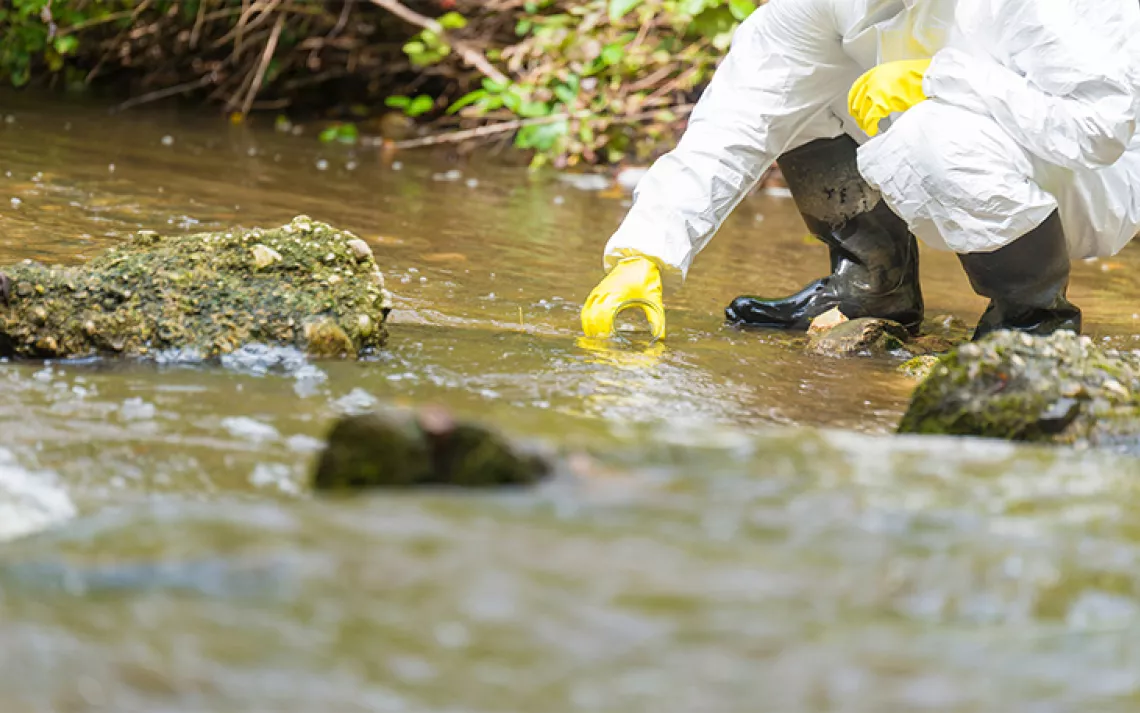Gone in a Generation
Despite greenwashing schemes, Monsanto may be the death of the monarch butterfly

Photo by iStock/blackwaterimages
Roundup is America’s favorite herbicide. But it withers more than weeds—over the past 20 years, 970 million monarch butterflies have died, and Roundup is one of the main culprits. And while Monsanto recently put $4 million toward monarch conservation, the mega-corporation continues to churn out the herbicide that has helped wipe out 90 percent of the beloved butterflies.
Each year, clouds of millions of orange and black wings flutter against a blue North American sky in the world’s only butterfly migration. Some butterflies travel up to 3,000 miles to the same dozen forests in Mexico. But the monarch migration is an endangered phenomenon. The population has plummeted from 1 billion to less than 40 million—and monarchs are still not a federally recognized endangered species.
Glyphosate, Roundup’s main ingredient, kills milkweed, which competes with crops and is also monarch larvae’s only food source. Glyphosate is also harsh on crop plants, so Monsanto developed glyphosate-resistant corn and soy. Now 94 percent of U.S.-grown soybeans and 89 percent of corn is genetically modified to be “Roundup Ready.” With herbicides that kill everything but their own GMOs, Monsanto is controlling what lives and what dies—and milkweed and monarchs are on the chopping block.
Meanwhile, the U.S. Fish and Wildlife Service is working to determine whether monarch butterflies should be designated as endangered. Protecting the monarchs will help other important species that fewer people care about. The less photogenic cycnia moth, for example, also relies on milkweed, and the greater prairie chicken needs protected open plains to survive.
Follow Sierra on Facebook, Twitter, Pinterest, Instagram, and YouTube.
What You Can Do
Sign the Sierra Club’s petition to bestow the “endangered” title upon monarchs.
Monarchs could face extinction in our lifetime. Help give them a chance
- Plant milkweed—as much as you can. Monarch Watch provides a planting guide that suggests milkweed species native to your hometown. The organization will even send schools and nonprofits free flats of milkweed to start gardens.
- Become a citizen scientist. Monarch counting programs exist across the country. Spend a sunny day watching butterflies and contributing to research.
 The Magazine of The Sierra Club
The Magazine of The Sierra Club







